Top Photo: Male eastern tiger swallowtail seeks nectar from buttonbush flowers alongside Floating Walkway in wetlands.
Eastern tiger swallowtails have essentially two flights here in the Piedmont of North Carolina. I see them in spring, centered around April, then again in July and August. The spring brood or flight is made up of smaller individuals than the summer flight. This may be due, at least in part, to environmental factors. The spring butterflies had been feeding, as larvae, from early to late fall on less nourishing or scarce food during the end of last year’s growing season. They overwinter as pupae. These two factors perhaps account for their smaller size in spring when they eventually emerge from their chrysalids.

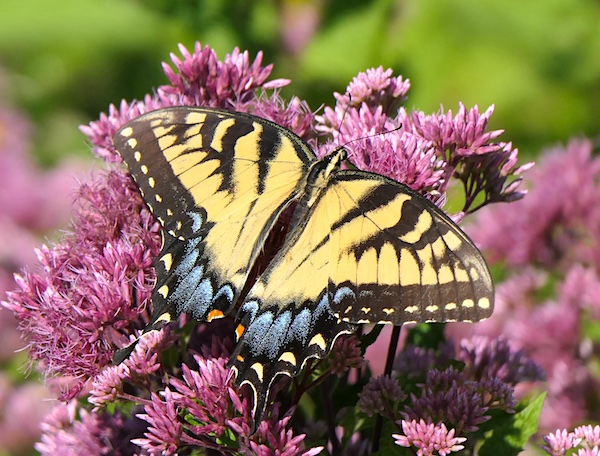
Many female eastern tiger swallowtails are black, or nearly so. The percentage of dark form females increases the further south you go.

Duck potato is in bloom in the wetlands. The plant forms potato-like tubers as part of the root system and is eaten by muskrats, beavers, deer and some waterfowl. Though the name suggests that waterfowl eat the tubers of the plant, it’s stated in most references that they “much prefer the seeds.“
If you’re interested, the tubers are edible for humans.

A common spider around campus, tiny orchard spiders build their orb webs on the horizontal plane. They typically hang upside down near the center of the web, but you have to look close, they are, as mentioned, rather small.
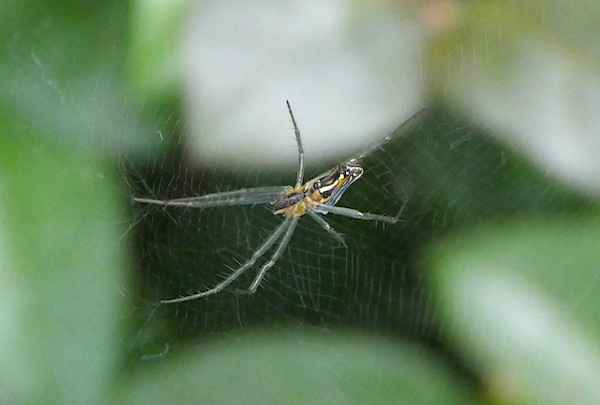
The resident brown thrasher family in the garden in front of the Butterfly House was on view this week. An adult and at least two immature birds were spotted in the brush. The young birds are still learning the way of the world. The adult was molting.

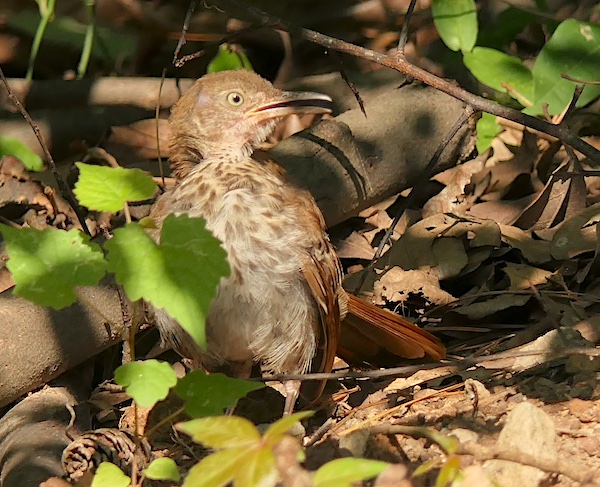
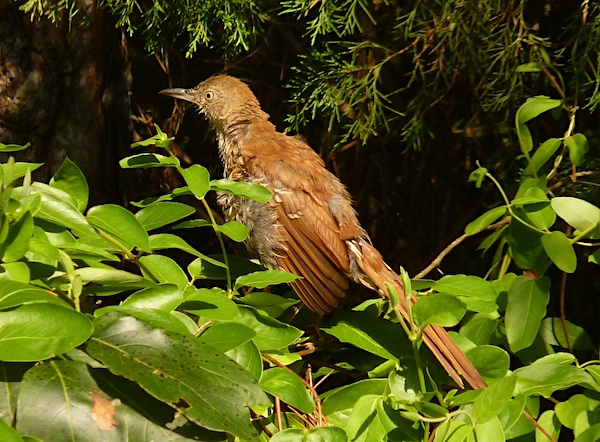
A close relative of the thrasher, another mimic thrush, and one of our campus’s most common summer residents, watches from inside a maple, a gray catbird.
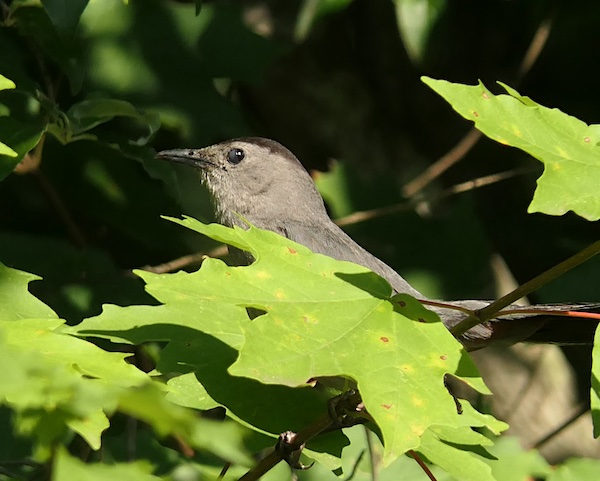
A bald-faced hornet hive is a marvel to look at, and to contemplate. The paper hive itself is made up of chewed wood fibers. The individual wasps find a source of wood, a bare branch, bark, 2 x 4, or piece of plywood and chew off the outer layer masticating the fibers into a pulp. They then fly back to the hive and apply the wet, soft material directly to the ever growing hive.
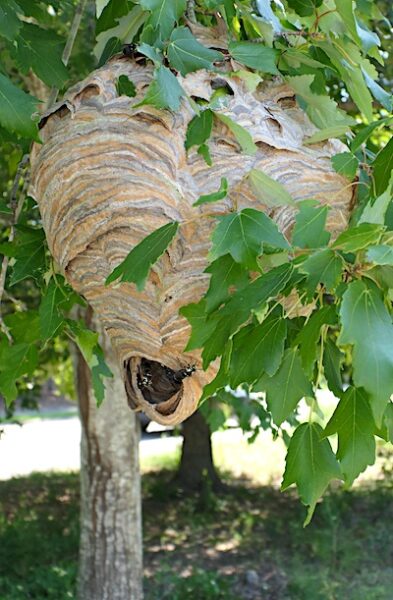

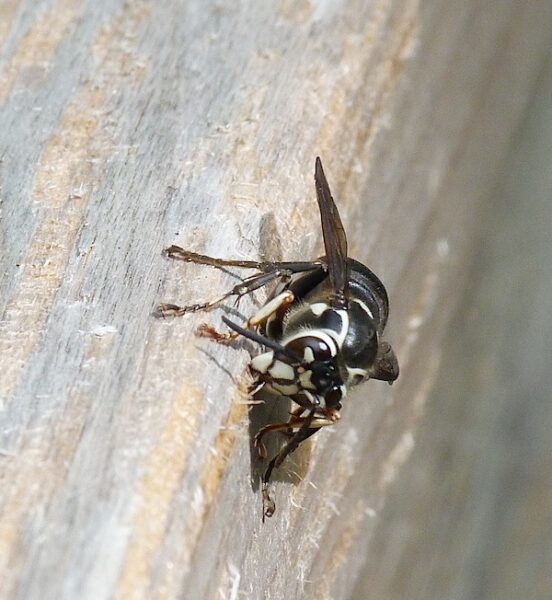

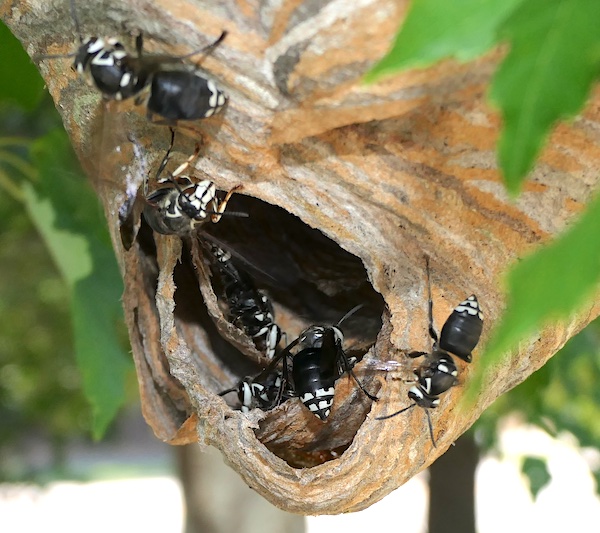
The layered appearance of the hive owes itself to the various wood sources from which the individual hornets collected fibers.
Have a nice walk around. You should be used to the heat by now.
Ranger Greg